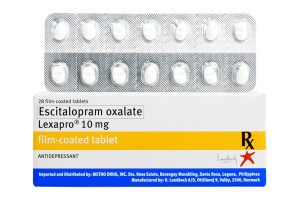BV treatment over the counter. Bacterial vaginosis is the medical term for an infection caused by an overgrowth of bacteria in the vaginal area. This infection is common in females 15 – 44 years of age.
It is estimated that as much as 21% of the female population in The US will experience bacterial vaginosis at some point in their lifetime. In addition, for reasons not clearly understood, the risk of developing bacterial vaginosis seems to increase in sexually active women.
The actual prevalence of BV may be considerably higher as many infections are asymptomatic or marked by mild symptoms and may be mistaken for the common yeast infection. BV has been associated with sexually transmitted infections like chlamydia and herpes.
The most common symptoms of BV may include the following:
- Watery white or gray vaginal discharge
- Strong odor despite regular hygiene, often described as a “fishy” odor
- Abnormal odor and discharge immediately following sexual intercourse
- Itching or pain in the vaginal area
BV Treatment Over The Counter
While prescription antibiotics are the quickest and most effective method for treating BV, access to a healthcare professional and antibiotic medication is only sometimes readily available.
Additionally, prescription antibiotics can be contraindicated for a select group of patients.
Fortunately, several over-the-counter treatments have effectively alleviated the symptoms of BV. In many cases, these home remedies may be adequate to resolve simple mild to moderate bacterial vaginosis infections.
Boric Acid Suppository
This remedy has been used as an antibacterial and antifungal agent for centuries. Boric Acid suppositories are inserted into the vaginal canal to help eliminate the bacteria and fungus responsible for bacterial vaginosis and yeast infections.
The effectiveness of this treatment has yet to be clearly shown through clinical studies. Still, anecdotal evidence suggests that this traditional home remedy can resolve mild to moderate BV infections with consistent use.
It is important to note that medical professionals do not recommend using suppositories for BV or yeast overgrowth infections due to the lack of proven efficacy and the risk of potential side effects.
Boric Acid can be toxic to fetal health, so women who are pregnant or believe they may be pregnant should not use this remedy. Other alternative treatment form include vaginal gels.
Tea Tree Oil (Melaleuca oil)
This remedy is a potent natural antifungal treatment used as a home remedy to resolve everything from athlete’s foot to dandruff.
There is limited anecdotal evidence that this oil may effectively resolve the symptoms of BV; however, this has not been demonstrated in scientific studies.
It should be noted that melaleuca oil can cause allergic reactions and irritation in sensitive individuals and should not be used by pregnant women.
Apple Cider Vinegar
Many people believe that this remedy can help to resolve or prevent BV. However, there is no scientific evidence to prove the validity of these claims.
While it does possess antibacterial properties, this remedy is far too acidic to use as a topical agent, as skin irritation and burns can result.
In addition, when consumed orally, it can cause digestive upset and damage the tooth enamel.
Garlic Supplements
Garlic possesses potent natural antibacterial properties. In many instances, oral garlic tablets are an effective treatment for resolving mild to moderate BV infections.
While some older remedies suggest using garlic suppositories are garlic-based antibacterial creams as a topical treatment for BV, the acidic nature of garlic may irritate the delicate vaginal tissue, so topical use is not recommended.
BV Antibiotics
Prescription antibiotics remain the official recommended treatment for BV.
While the home remedies discussed above may be used when professional medical care or access to prescription antibiotics are restricted, patients should be aware that they may require additional treatment with an appropriate antibiotic to fully resolve the infection and prevent it from recurring.
BV Treatment Over The Counter: Prescriptions
Clindamycin, Metronidazole, Tinidazole, and Secnidazole are the most commonly prescribed antibiotics used to treat bacterial vaginosis infections.
Each prescription antibiotic has been clinically proven to resolve the symptoms of BV and prevent a recurrence.
Your healthcare provider will evaluate your medical history and current symptoms to determine the most appropriate prescription treatment to help treat your BV symptoms.
Prescription treatment may include 7 – 14 days of oral antibiotic medication or a topical antibiotic cream.
In some cases, your healthcare professional may prescribe oral and topical therapy to resolve the BV infection as quickly as possible. This infection shouldn’t be left untreated.
Can Amoxicillin Treat BV?
Amoxicillin is a common prescription antibiotic used to treat many infections. Amoxicillin was once commonly used to cure BV.
However, as our understanding of antibiotic treatment has expanded and newer antibiotic medications have been developed, Amoxicillin is no longer used to treat most BV infections.
Instead, antibiotics are designed to target specific bacteria. Clindamycin, Metronidazole, Tinidazole, and Secnidazole have proven to be the most effective antibiotics for targeting and eliminating the particular variety of bacteria responsible for BV infections.
Amoxicillin may be used in rare instances where the more common antibiotics have proven ineffective or are contraindicated in some way.
Still, there are better choices for resolving most BV infections.

Can Amoxicillin Cause BV?
Broad-spectrum antibiotics, such as Amoxicillin, are effective against many bacteria. This means that when you take Amoxicillin or another broad-spectrum antibiotic to treat an infection, the antibiotic is likely to destroy both the harmful and the beneficial bacteria in the human body.
Beneficial bacteria exist partly to help keep the number of harmful bacteria in check. When the body’s beneficial bacteria are depleted by using a broad-spectrum antibiotic, such as Amoxicillin, harmful bacteria may flourish, and a BV infection or another type of infection may develop.
Can I Use Monistat For BV?
Monistat is an antifungal topical cream or ointment used to treat the common candidiasis.
Yeast overgrowth infections are caused by a fungus rather than a bacteria and are therefore treated with antifungal agents like Monistat and others.
However, because bacteria cause BV, antifungal creams and ointments such as Monistat are unlikely to resolve the symptoms of a BV infection.
Because yeast overgrowth infections and BV share many of the same symptoms and can occur simultaneously, it can be challenging to determine whether you may be suffering from one or both of these conditions.
However, a healthcare professional can analyze your symptoms and accurately determine the need for antifungal medications such as Monistat or antibacterial treatments like prescription antibiotics to treat your specific infection.
What Is The Difference Between A Yeast Infection & BV?
Yeast overgrowth infections and BV are often confused with one another, and to make matters worse, these two types of infections can occur simultaneously.
An overgrowth of yeast fungus causes yeast overgrowth infections. They are characterized by extreme itching and discomfort in the vaginal region, accompanied by a thick, white discharge with a milky white, cottage-cheese appearance.
An overgrowth of harmful bacteria causes bacterial vaginosis in the vaginal area and generally produces milder symptoms than the common candidiasis.
BV typically causes moderate itching and discomfort in the vaginal area, accompanied by a watery gray or white discharge and a foul “fishy” odor despite regular hygiene.
It is essential to accurately determine whether you are suffering from candidiasis or a BV infection, as these two infections require different courses of treatment to resolve.
Yeast overgrowth infections are generally treated with over-the-counter antifungal topical creams, ointments, and suppositories, while Bacterial Vaginosis requires treatment with oral or topical antibacterial agents.
The over-the-counter remedies used to alleviate candidiasis symptoms are insufficient to resolve a BV infection.
Prescription antibiotics may be required to fully resolve a Bacterial Vaginosis infection and prevent the disease from returning.
When To See A Doctor
While BV treatment over the counter are suitable for mild to moderate conditions, if these options fail to resolve the symptoms fully, symptoms worsen, or the infection recurs, it is time to seek out the help of a medical professional.
A qualified healthcare professional will analyze your medical history and discuss your current symptoms to accurately diagnose the type of infection you may be suffering from.
They will then prescribe the most appropriate antibiotic treatment to eliminate the specific bacteria causing the uncomfortable symptoms completely.
A visit with a medical professional to receive an accurate diagnosis and appropriate prescription medication is the quickest way to get rid of your infection and get back to feeling better fast.
Most patients begin to note a significant reduction in their BV infection symptoms within 1 – 2 days of starting prescription antibiotics and are symptom-free within 5 – 7 days.
Remember, though you may be feeling much better very quickly after beginning antibiotic treatment, it is essential to continue taking the antibiotics until they are gone to ensure that the bacteria have been completely eradicated and prevent a recurrence of the infection.
How Doctor Alexa Can Help
Professional medical care and prescription antibiotics are the most effective treatment for BV and the quickest way to resolve your uncomfortable symptoms and begin to feel better fast.
That being said, many people find themselves reading articles like this in a desperate search for over-the-counter home remedies to help resolve their painful symptoms because professional medical care is unavailable or unaffordable, or they cannot take time off work to visit a doctor’s office.
Far too often, this prevents people from obtaining the prescription antibiotics they need to resolve their infection wholly and quickly. Doctor Alexa helps you by bringing first-class healthcare services at your comfort and convenience.
Doctor Alexa is a telemedicine platform offering convenient virtual healthcare visits with qualified medical professionals.
A visit with a Doctor Alexa healthcare is like a visit to your family’s primary care provider without waiting days or weeks for an available appointment slot.
There is no need to take time off work, and you will not need to spend hours in a medical office waiting room.
World Class Healthcare From the Comfort of your home
You can conduct an entire doctor’s visit with Doctor Alexa, from scheduling your appointment to meeting with qualified healthcare professionals, all from the comfort of your home.
All you need is a smartphone, tablet, or computer with a camera, microphone, and access to a reliable internet connection.
Doctor Alexa will review your medical history, then meet with you face-to-face over a live virtual video call to discuss your current symptoms and available treatment options.
The doctor or healthcare provider will then prescribe the appropriate treatment and send the prescription request to the pharmacy of your choice to be filled.
So pick up the prescription from your local pharmacy and start feeling better today!





